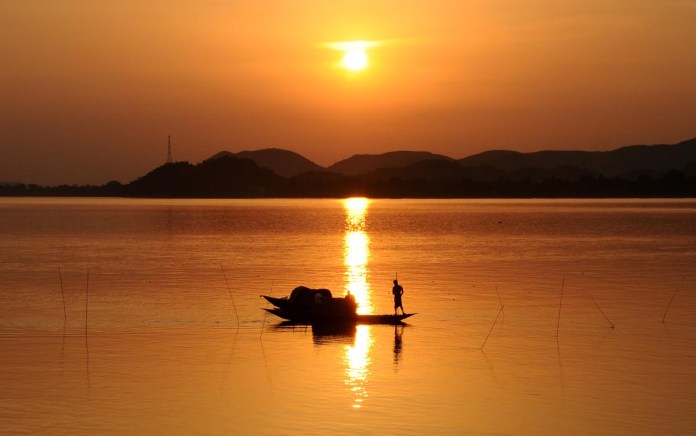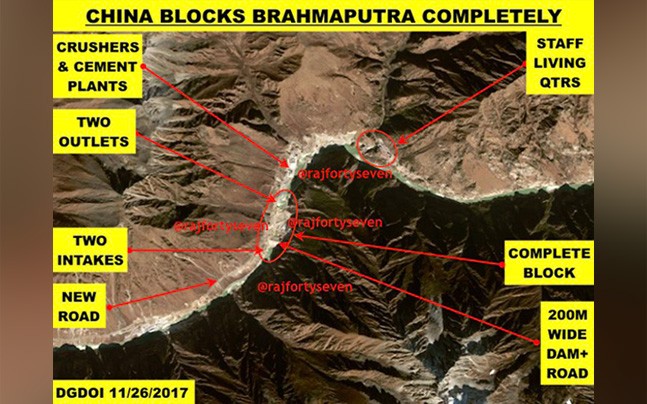
(TibetanReview.net, Dec15, 2017) – Ongoing work on a Chinese project that includes a new dam in an advanced stage of completion covering the entire breadth of the Yarlung Tsangpo river and a tunnel through which the water is being diverted is what is polluting the Siang River in India’s northeastern state of Arunachal Pradesh, reported telegraphindia.com Dec 14.

China has for long denied that it was responsible for the Siang River turning black. Citing latest satellite images released Dec 12 by Digital Globe, the US commercial vendor of space imagery, the report said construction of massive new dams on the Yarlung Tsangpo in Chinese ruled Tibet with an underground tunnel was the major cause of turbidity.
The report said the pictures gave clear indication of Chinese execution to divert the river to the arid Taklamakan desert in Xinjiang.
The satellite image shows polymer resin adhesives sprayed in the project area for a dust suppressant system, which may be the cause of Brahmaputra and Siang waters turning black, the report said.
The report said the images show a 200m dam completely blocking the waters of the Yarlung Tsangpo, which is known as Siang unpon its entry into Arunachal and as the Brahmputra River in the rest of India. It said the water enters into two 50m inlets towards the west of the river, coming out after flowing 900m downstream in two smaller outlets.
The report cited an unnamed source as saying the project under construction was 60km east of Shannan (Tibetan: Lhokha) township in the prefecture by the same name in Tibet.
The Yarlung Tsangpo originates from the Angsi Glacier in Purang County of western Tibet’s Ngari (Chinese: Ali) Prefecture, and meanders through much of southern Tibet before entering India.






